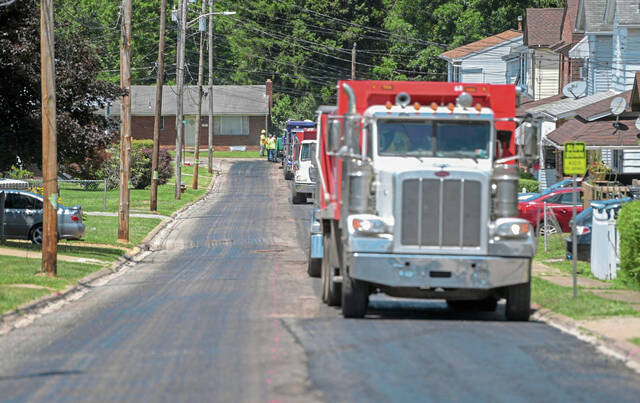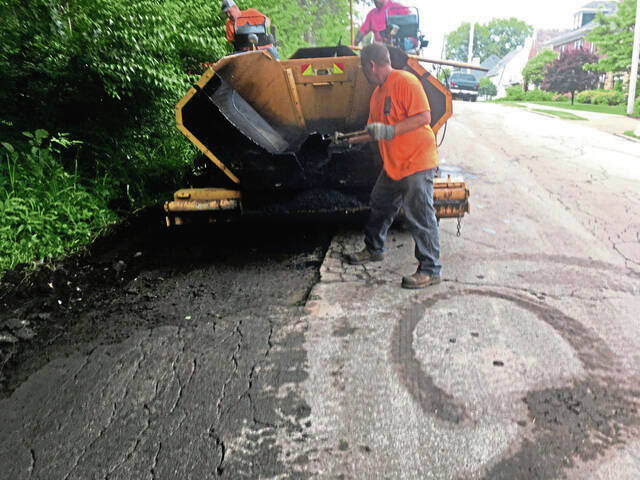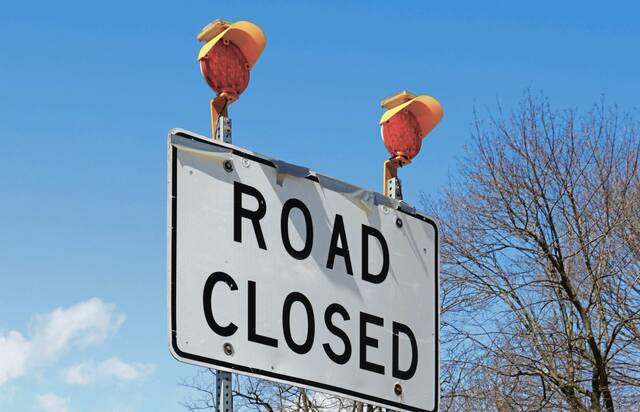Municipalities in the midst of summer paving programs across the region are feeling the impact of the rise in asphalt prices.
“It is definitely putting a strain on our budget, what we are able to do in-house,” said Tom Bell, Greensburg’s public works director.
The city budgeted asphalt at $51 a ton for 2022 but finds itself paying $61 a ton, which is the price that was bid through the state’s cooperative purchasing program, Bell said. But that price is subject to an escalator clause that is based on the rising price of asphalt, Bell said.
In an effort to save money on paving, Allegheny Township joined Lower Burrell and New Kensington in combining their paving projects, said Greg Primm, Allegheny Township manager. The township will pay $296,711 to pave a stretch of Shearsburg Road, rather than several smaller streets, Primm said.
The municipality bid its paving project early this spring, beating the higher jump in asphalt prices, Primm said. But, it expects a boost in cost when it patches potholes on the roads, Primm said.
In Hempfield, the rise likely will cause an increase of about $26,000 in a paving program that would cost about $1.1 million, said Dan Schmitt, township engineer who is a general partner with Gibson-Thomas Engineering of Latrobe.
Greensburg intends to tap into its Community Development Block Grant money to the tune of about $45,000 to pay for the first phase of a $317,406 project to mill and pave seven streets. Another $63,000 intended for park renovations will be redirected for paving because the bids were higher than anticipated — close to 50% higher year over year, said Trisha Hilderhoff, Greensburg fiscal director.
Irwin was forced to cut back its paving program because bids were higher than anticipated. The borough awarded a $219,742 contract in May, but that was about $80,000 less than its initial low bid for a more extensive paving program.
North Huntingdon will pay an extra $91,000 on top of the $937,978 contract to pave 7 miles of roads, said Bob Robinson, the township’s consulting engineer. The average liquid asphalt costs in Southwestern Pennsylvania, as determined by PennDOT, jumped from $508 a ton when North Huntingdon advertised for bids in February to $738 a ton in June.
New Kensington saw about a 15% increase in its paving costs this year, compared to last year, said city engineer Tony Males, and will pay $103,000. By joining Lower Burrell and Allegheny Township, the city may have received a lower bid than if it went alone, Males said. With the joint bid, the increase in costs “hasn’t hit (the budget) quite as hard” as it might have, Males said.
Most of the paving program will be paid with the city’s liquid fuels allocation, which will make New Kensington liable to pay any asphalt escalator clause.
The escalator clause kicks in when the price of liquid asphalt — a sticky fluid refined from the bottom of the barrel of oil — rises more than 10% from the time when bids were submitted, Schmitt said. A couple of years ago, contractors had to reimburse municipalities when the liquid asphalt price fell back, Schmitt said, but’s that’s definitely not the case now.
“Everybody’s going to have it (pushed up by liquid asphalt escalator clause) based on these prices, if they are using liquid fuels money,” Schmitt said.
In the 30 years he has been in the business, Schmitt said he has never seen the price go this high.
“It’s (asphalt prices) going up so fast, sometimes twice in a month,” by $50 a ton, said Sonny Tresco, owner of Tresco Companies, the Plum-based asphalt-producing and paving company.
Prices that were at $360 a ton for asphalt earlier this year jumped to $738 a ton, Tresco said.
“You can’t make any money,” when prices rise that fast, said Tresco, who has been in the paving business for 50 years.
“If the escalator prices jump 9%, you eat it,” Tresco said, because the contractor will not get reimbursed unless the price hike is 10%.
The bright spot for the business is that his aggregate supply chain remains strong and prices are relative steady, Tresco said.
As for the price dropping in the near-term, “I don’t see it,” Tresco said.
Oil, liquid asphalt prices rise
The higher asphalt prices are driven by the increase in a barrel of crude oil, from which asphalt is refined for use in producing pavement, said Charles Goodhart, executive director of the Pennsylvania Asphalt Pavement Association, a Harrisburg-based trade group representing asphalt producers and paving companies.
Asphalt, which consists of about 5% of the paving material, has skyrocketed about 54% since June 2021, rising from an average $479 a ton to $738 a ton. When municipalities were developing budgets for 2022, the average cost for liquid asphalt in the region was $508 a ton, according to PennDOT’s index.
“The price probably will go a little bit more (higher). It could end up busting their budgets,” Goodhart said of the higher cost of the paving mixture, even though the price of asphalt usually lags the rising price of oil.
The increase in the cost of the aggregates — stone and sand used to form the black pavement — has risen as well. The aggregates are heated and coated with the asphalt and mixed together at asphalt plants in temperatures ranging from 250 degrees to 350 degrees. To get that newly heated composite from the batch plants, diesel fuel-guzzling dump trucks are hauling it to the highway, where pavers and rollers, which also run on diesel, are laying it and then compacting it for a smooth roadway surface.
“The price of the aggregate is going up because of the cost of the diesel fuel to transport the aggregates,” Goodhart said.
For a contractor like Bryer Asphalt Paving of Unity, the rise in diesel prices “has affected the cost of buying the materials and shipping the materials” to a job site, said Robert Bryer, owner of the paving company that does projects throughout Southwestern Pennsylvania.
Bryer, a fourth-generation owner, said he has seen fuel prices rise by $4 per ton to $5 per ton since asphalt plants have opened this spring.
The fast-rising prices in diesel fuel have impacted the oil-based asphalt, leaving him in a bind, Bryer said. He estimated jobs this spring based on a lower diesel fuel price and now must honor those contracts, cutting into his profit.
Bryer said he will be forced to add a fuel surcharge clause in future contracts to recover those costs.
The bad news for asphalt paving contractors like Bryer is there are no fuel surcharge clauses in the municipal paving contracts to compensate for the rising cost of diesel fuel, North Huntingdon’s Robinson said.
“The contractors are really going to be hit hard,” with some making no money on a paving project, Robinson said.
Oil price rise impact
The pressure on fuel prices that impact fuel surcharges that push paving costs likely won’t let up soon, said Debnil Chowdhury, an analyst for S&P Global Commodity Insights, which specializes in refining and marketing.
The reasons for the predicament are multifaceted, interlocking and complicated, he said.
The sanctions on Russian-produced oil because of its invasion in Ukraine adds another layer to the rise in fuel prices, said Risa Kumazawa, associate professor of economics at Duquesne University. That leaves countries more reliant once again on production and pricing set by the Organization of Petroleum Exporting Countries, better known as OPEC.
The diesel-powered vehicles that transport the aggregates and asphalt are competing with the same diesel used to power farm and other construction vehicles, Chowdhury said.
And the supply of diesel is low — “one of the worst situations inventory-wise” — as many refineries closed in the past 10 to 15 years, Chowdhury said. It made the East Coast more dependent upon Gulf Coast production, “which set us up for a lot of this (diesel) price,” he said.
Europe is buying more liquid natural gas from U.S. producers and has been since October, pushing up the price of the same natural gas needed in the process to remove sulfur from diesel fuel, Chowdhury said. Sending liquid natural gas and diesel across the Atlantic Ocean is more profitable than selling it domestically, he noted.
There has been a significant hike in the price of crude oil from which diesel is produced, adding to the rise in prices, Chowdhury said. The Energy Information Administration put the average price of diesel at $6.08 a gallon in the region, up about $2.65 a gallon from a year ago.
Gibson-Thomas’ Schmitt put it in a nutshell: “There’s nothing that has not gone up.”















